Truist Bank investing has quickly become a go-to solution for individuals and businesses seeking a balanced approach to wealth growth and protection. As one of the largest and most forward-thinking institutions in the U.S., Truist Bank offers more than just traditional banking.
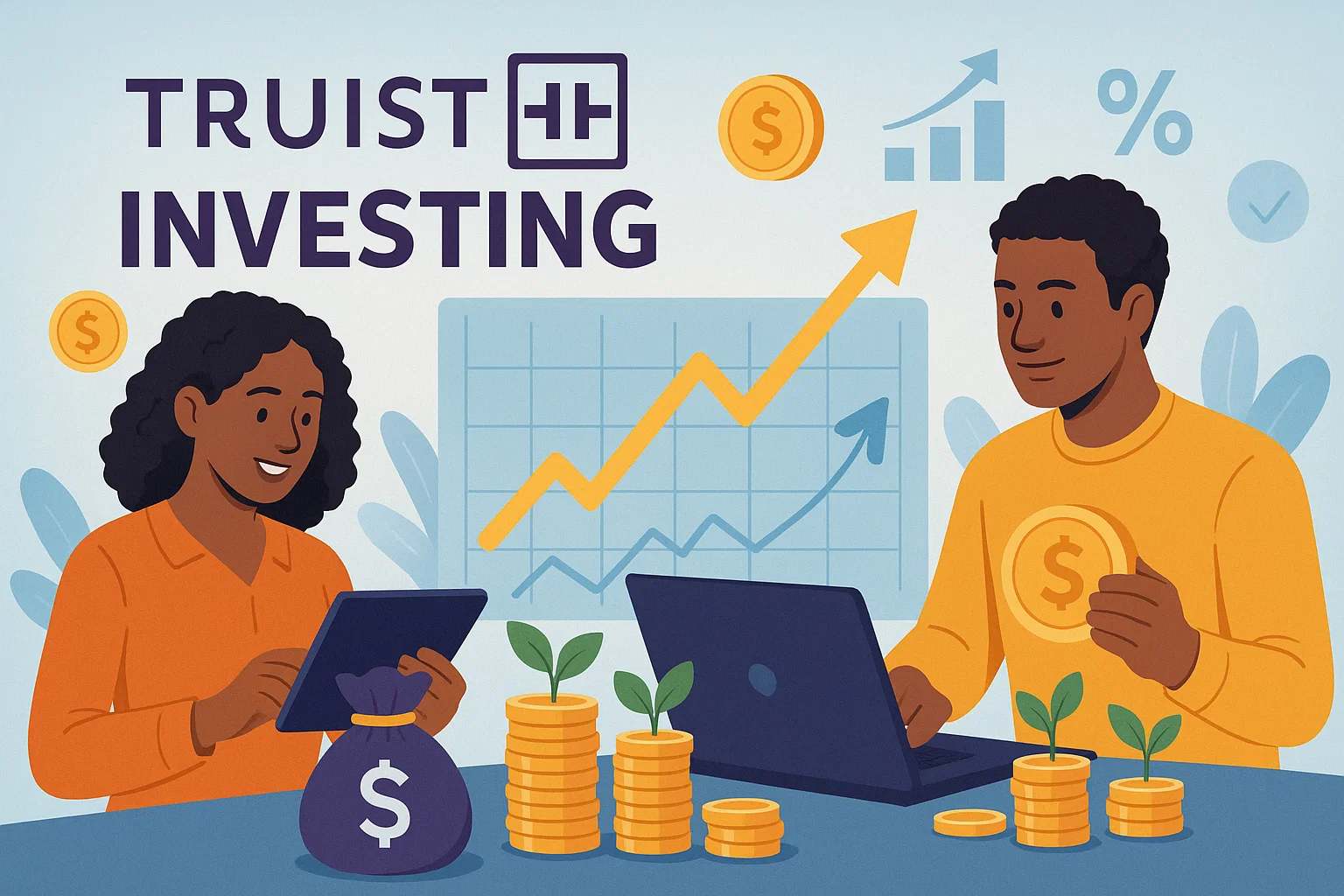
Truist has covered many different investing services such as: guided portfolio management, self-directed trading, or long-term trust and estate planning. In this guide, we’ll explore everything you need to know about Truist Bank investing from its core offerings and digital tools to the advantages it provides for today’s investors. If you’re considering where to place your money in 2025, this could be the investment partner you’ve been searching for.
Overview of Truist Bank
Truist Bank was formed in 2019 through the merger of BB&T and SunTrust. Since then, it has become one of America’s top 10 commercial banks. Headquartered in Charlotte, North Carolina, Truist serves clients in 17 states and Washington, D.C.
The bank offers a wide range of financial services. These include personal banking, commercial lending, mortgages, insurance, and investment solutions. As of early 2025, Truist manages over $536 billion in total assets. This makes it a major player in the U.S. financial system.
Importantly, Truist is more than just a bank. It operates with a clear purpose: to inspire and build better lives. That purpose drives its commitment to clients, teammates, and communities. Moreover, Truist focuses on strong values like trust, care, collaboration, and success. These values guide its customer service and business decisions. In addition, the bank embraces innovation to deliver both personal and digital experiences.
Today, Truist continues to grow across the Southeast and beyond. It is well-positioned to meet the evolving needs of investors, families, and businesses alike.

Overview of Truist Bank Investing Services
At Truist, investing is not a one-size-fits-all solution. Instead, it’s a flexible journey designed based on who you are, how you want to invest, and what you hope to achieve. Truist bank investing service provides a range of options tailored to fit different investing styles, experience levels, and financial goals.
Common Types of Investments
There are a wide variety of Truist bank investing types:
- Stocks: Ownership shares in public companies. Typically offer long-term growth but may fluctuate.
- Bonds: Loans to governments or companies that pay interest. Known for stability and fixed income.
- Mutual Funds: Pooled money invested by professionals into a mix of assets.
- ETFs (Exchange-Traded Funds): Similar to mutual funds but traded like stocks, offering liquidity and diversification.
Each asset type plays a unique role in a balanced portfolio, helping you match your investments with your personal risk tolerance, timeline, and financial goals.
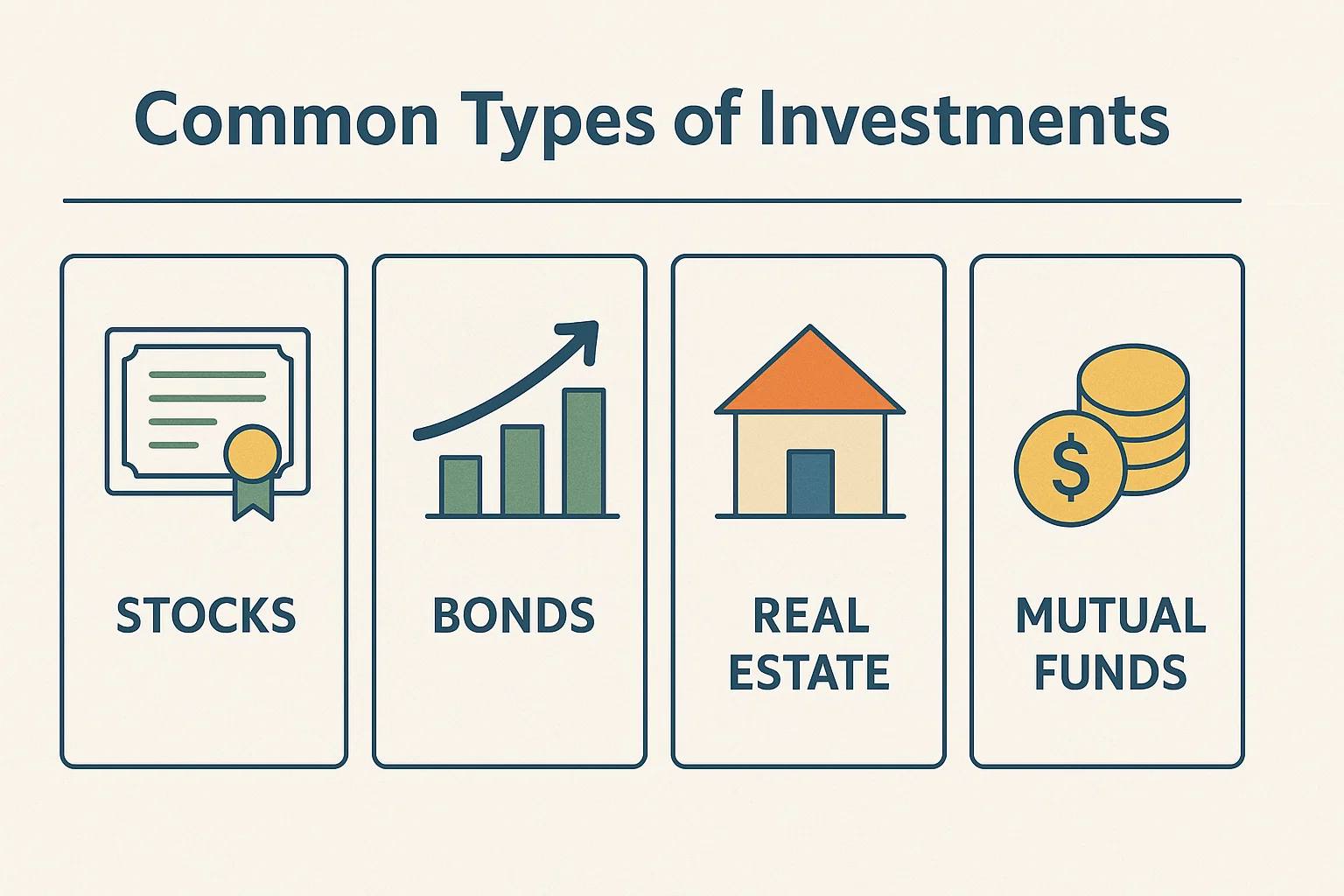
Investing Concepts
It’s necessary to know a few key investing concepts that apply to every portfolio no matter how big or small.
- Portfolio: Your portfolio is the total collection of all your investments. It might include stocks, bonds, mutual funds, cash, commodities (like gold), or even cryptocurrencies (such as bitcoin). Each component plays a specific role in balancing growth, stability, or income.
- Asset Mix: The asset mix refers to the types of investments you hold and the percentage weight of each. If you’re risk-averse or nearing retirement, you might choose more bonds for stability and predictable returns.
- Diversification: It means spreading your money across different investments so that the underperformance of one doesn’t hurt your entire portfolio. Consequently, investor, especially new ones can easily manage risk.
- Compounding: Compounding is the snowball effect of reinvesting your earnings. The longer you stay invested, the more powerful compounding becomes, especially for retirement savings.
- Dividends: Some companies reward shareholders by paying dividends, which are cash distributions typically paid quarterly. Even if a stock’s price remains flat, dividends can still generate income. Better yet, reinvesting those dividends allows you to purchase more shares over time, accelerating your portfolio’s growth through both capital appreciation and income.
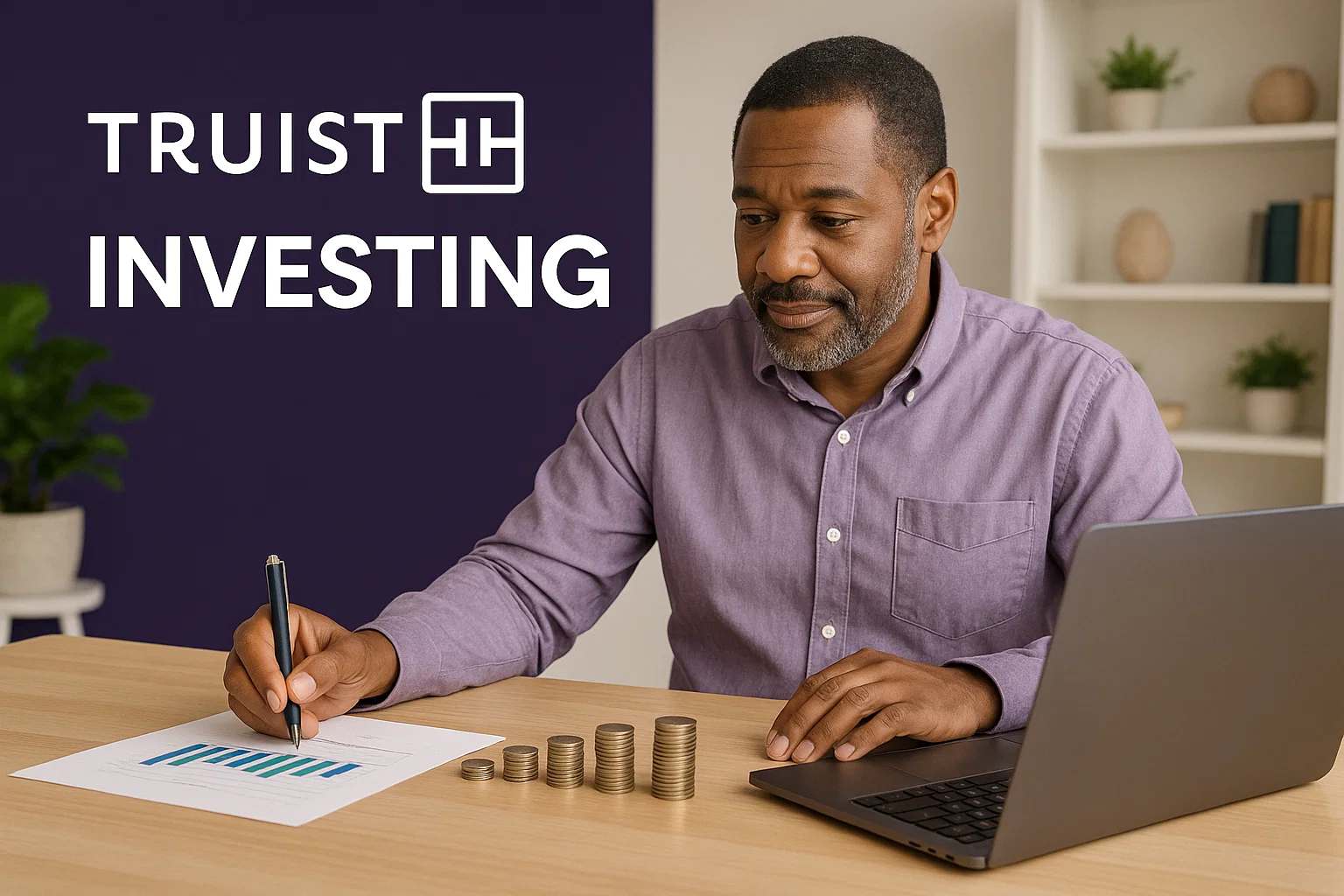
Truist bank investing path
To help clients choose the right path, Truist bank investing offers three distinct investment approaches:
- Online Investing – For individuals who prefer managing their investments digitally. This includes automated portfolios through Truist Invest and self-directed trading via Truist Trade.
- Easy to Get Started: Opening a managed investment account takes only a few minutes.
- Practical Tools for Everyday Investors: If you want to monitor your portfolio anytime, Truist gives you full visibility and control.
- Flexible Account Options: You can open both traditional and Roth IRAs online through Truist Trade. It’s deal for customers prioritizing same flexibility when managing personal financial services.
- Team of Advisors – A collaborative service model where clients who invest between $5,000 and $250,000, work with a group of financial professionals to build and manage a personalized strategy.
- Comprehensive Service: The Client Advisory Center delivers well-informed, thoughtful solutions designed for everyday investors.
- Goal-Based Planning: Receive personalized investment strategies based on your unique financial objectives.
- Transparency First: Truist emphasizes clear communication regarding fees, risks, and potential outcomes, so you can invest with confidence and peace of mind.
- One-on-One Advising – A fully tailored experience with a dedicated advisor, ideal for clients (more than $250,000 investment) with more complex needs.
- Listening with Purpose: Truist advisors engage in meaningful conversations. The result is a financial strategy deeply aligned with your personal vision.
- Guiding with Experience: Truist is committed to evolving with you and introducing new ideas and strategies that help you navigate change and unlock your full financial potential.
- Empowering with Clarity: The planning process breaks down the complexity of today’s financial choices into a few clear, decisive actions so you feel informed, confident, and in control at every step.
Each approach of Truist bank investing is supported by its core principles: transparency, simplicity, personalized service, and access to trusted financial expertise.

Truist Bank Investing Options
At Truist, investing doesn’t have to be complicated. With two distinct Truist bank investing options: Truist Invest and Truist Trade. Moreover, you can choose the level of support and involvement that works best for your financial goals. Whether you’re looking for automated guidance or full independence, Truist empowers you to take control of your investments on your terms.
Truist Invest
Truist Invest is a digital investing platform that combines automated portfolio management with access to real financial advisors, offering a personalized and convenient investment experience. With a minimum investment of $5,000, you’ll receive a professionally managed portfolio tailored to your risk profile and objectives. However, you’re never left on your own, clients get unlimited access to financial advisors through the Truist Client Advisory Center.
Key Features
- Personalized Investment Strategy: After answering questions about your financial goals and risk tolerance, Truist Invest creates a customized investment portfolio tailored to your needs.
- Automated Portfolio Management: The platform uses advanced technology to automatically manage and rebalance your portfolio, ensuring it stays aligned with your investment objectives.
- Flexible Account Options: You can open both brokerage and retirement accounts, including traditional and Roth IRAs, through Truist Invest.
- Transparent Fees: The platform charges an annual program fee of 0.85%, with no hidden costs.
Steps to Start Investing
- Tell Us About Yourself: Provide information about your financial goals and risk tolerance.
- Choose Your Investment Style: Work with an advisor to select an investment approach that suits you.
- Fund Your Account: Deposit funds into your account, either from cash or by transferring an existing investment account. Many clients link their checking accounts for easy funding.
- Live Your Life: This Truist bank investing option will manage and rebalance your portfolio automatically. Therefore, you can focus on your life while Truist Invest manages your investments professionally.

Truist Trade
Truist Trade is a self-directed online trading platform offered by Truist bank investing services. It caters to investors who desire independence and control over their investment choices by providing a suite of tools and resources to facilitate informed decision-making. Furthermore, with no minimum to start (just an initial funding of $1), it’s ideal for investors who enjoy real-time trading, in-depth market research, and stock screening tools.
Key Features
- Commission-Free Trading: Enjoy $0 commission fees for trades involving up to 1,000 shares per order of common stocks and exchange-traded funds (ETFs). Moreover, for orders exceeding 1,000 shares, a fee of $0.03 per share applies.
- Annual Subscription Fee: A $60 annual fee is charged per client. However, potential waivers are available under certain conditions, such as: maintaining a household investment balance exceeding $250,000 with Truist Investment Services, Inc. and/or Truist Advisory Services, Inc.
- Comprehensive Trading Tools: Access in-depth market insights, built-in stock screening capabilities, and a consolidated view of your investment portfolio to make informed trading decisions. It is similar to how you might review statements for credit cards.
- Flexible Account Options: Open and manage various account types, including individual brokerage accounts and retirement accounts like traditional and Roth IRAs, directly through the platform.
- Real-Time Portfolio Management: Monitor your investments in real-time, view balances, and transfer funds seamlessly within the platform.
Steps to Start Investing
Truist Trade offers a user-friendly platform for self-directed investors. Here’s how you can get started:
- Get started in minutes:
- Open a new Truist account if you’re a new user
- Sign in to your existing Truist online banking profile if you’re already a client
- Fund Your Account:
- Transfer funds from your personal checking, savings, or investment account.
- You can also roll over 401(k) accounts from previous employers.
- After funding, your account is ready for trading.
- Start Trading:
- Access the intuitive dashboard to begin self-directed investing.
- Utilize built-in stock screening tools and industry ratings to identify stocks that align with your goals and values.
- Monitor your investment portfolio, view balances, and transfer funds – all from a unified dashboard.

4 Elements to Consider Before You Start Truist Bank Investing
Investing can help you reach long-term goals, improve your financial well-being, and free up energy to focus on what matters most. Still, for many people, getting started feels confusing. Fortunately, by consider just a few elements, you can begin your Truist bank investing journey with clarity and confidence.
Let’s walk through the four key factors every smart investor should consider.
Your Goals
To invest mindfully, you need goals that are specific, measurable, and meaningful to you. Instead of vague ideas like “save for a house,” try: “Invest an extra $100 per month into my brokerage account” or “Allocate 2% of my pretax salary into my Roth IRA for the next 12 months.”
But don’t stop there. Make sure your goals are achievable. For instance, if you’re 40 and aiming to save $1 million by retirement, $100/month won’t cut it. Either increase your savings or adjust your expectations. And as life evolves whether you get a raise or face a new expense revisit and revise those goals.
Just as importantly, ask yourself: Does this goal bring me joy? Investing is for your future, but that doesn’t mean sacrificing today’s happiness. Enjoyment and discipline can coexist. As long as you budget wisely or even pay off a credit card, it’s perfectly okay to spend on things that make life meaningful today.
Still unsure about how to set goals? With Truist Invest, you’ll have access to a team of financial advisors ready to help you turn goals into strategy.

Acceptable Risk
No matter how careful you are with money, investing in general and Truist bank investing in particular, always involves some level of risk. The key is understanding how much uncertainty you’re truly comfortable with.
If you’re conservative, you may avoid the stock market altogether yet doing so could limit your long-term growth. If you’re aggressive, you may embrace volatility in exchange for higher potential returns.
In general, the more time you have, the more risk you can afford to take. A 20-year retirement plan allows room to recover from downturns. In contrast, if you’re buying a house next year, you’ll want a more stable investment mix.
As time goes on, you can reduce your exposure to risk by rebalancing your portfolio. That often means shifting from stocks to bonds or other conservative assets as you approach major life milestones.
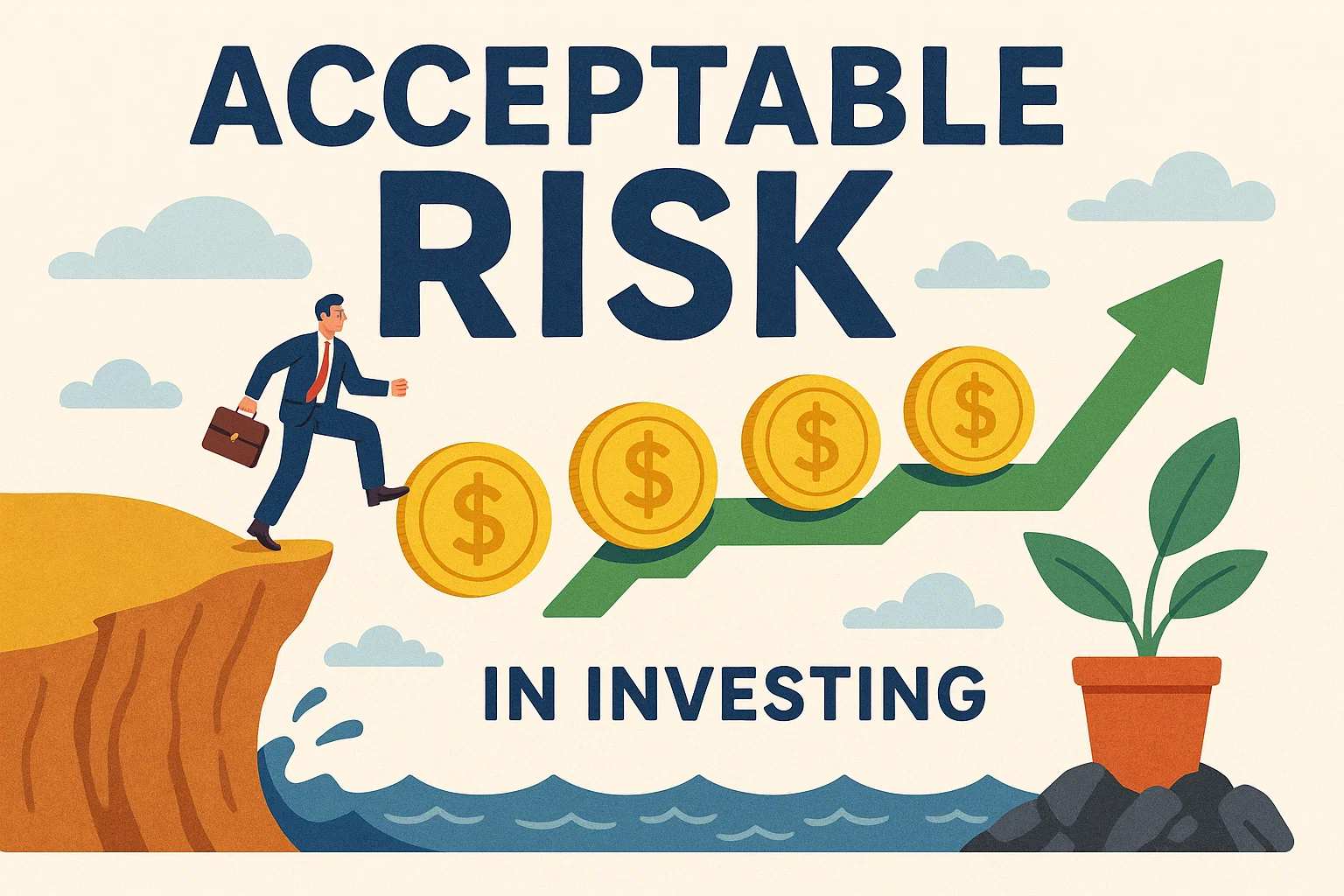
What to Invest In
It’s easy to feel overwhelmed by all the investment choices: stocks, bonds, mutual funds, ETFs. If you’re new, start simple.
One of the easiest entry points is the exchange-traded fund (ETF). An ETF is essentially a bundle of investments, often stocks or bonds that you buy like a single stock. This gives you instant diversification and lowers your overall risk.
Better yet, ETFs often track broad indexes like the S&P 500, Nasdaq, or Dow Jones, or focus on specific sectors such as clean energy, real estate, or healthcare.
Still unsure where to begin? Online platforms like Truist Invest can help you filter through ETF options and build a diversified portfolio that aligns with your values and goals.
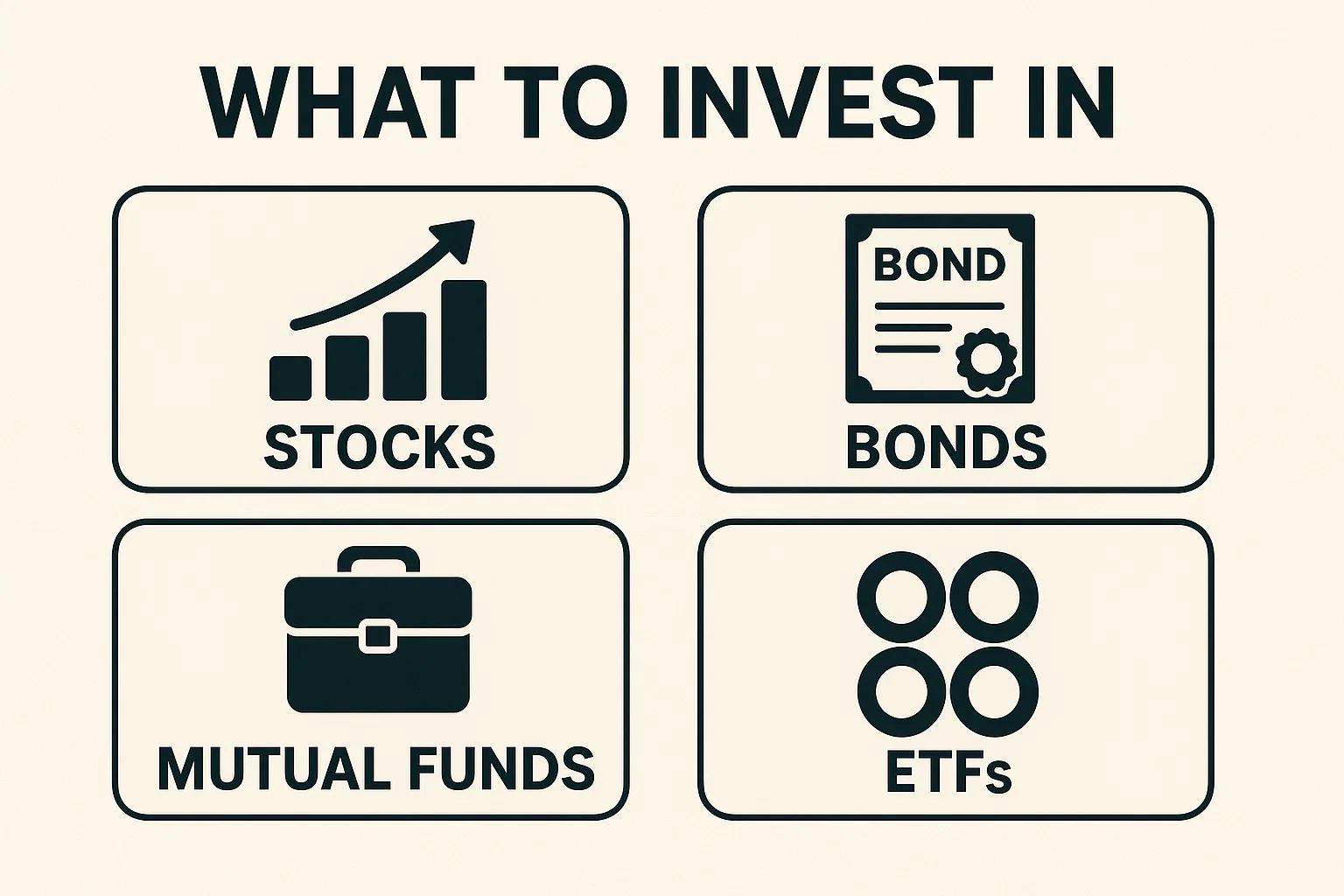
What to Do After Investing
You’ve opened an account. You’ve made your first investments. Now what?
First, stay consistent. Truist bank investing is a marathon, not a sprint. While it’s tempting to “set it and forget it,” it’s smarter to check in a few times per year. Review performance, reassess your goals, and make changes if needed.
If you’re investing through Truist Invest, you’re not on your own. You’ll benefit from:
- Lower fees than traditional advisors
- Ongoing portfolio monitoring and rebalancing
- Tax-loss harvesting strategies (where applicable)
- Access to real financial advisors who can answer questions and fine-tune your strategy as your life changes
And remember life will change. You might reach old goals, set new ones, or encounter surprises along the way. Maybe you’ve taken on a home loan, launched a business, or needed a short-term loan. Revisit your plan regularly to ensure it still reflects who you are and where you want to go.
By asking these four questions and being honest with yourself, you’ll be far more prepared to invest with intention. Whether you start with $100 or $10,000, the goal is the same: build a life that aligns with your values, both now and in the future.
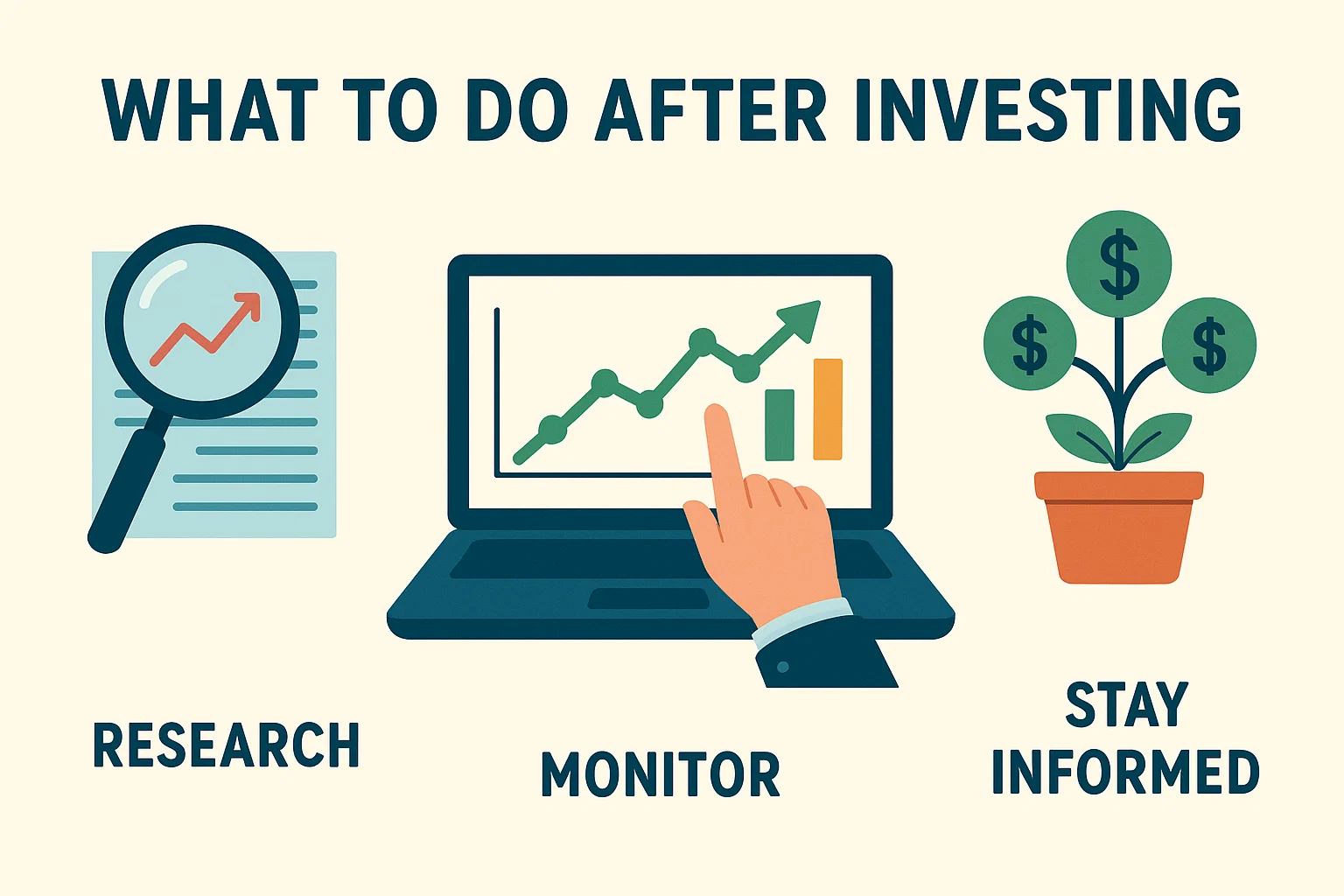
Avoid Obstacles Keep You From Truist Bank Investing
Truist bank investing can feel daunting, especially when certain obstacles seem insurmountable. However, many common barriers are more psychological than practical. Let’s explore six prevalent misconceptions that shouldn’t deter you from starting your investment journey.
“I Don’t Have Enough Money to Invest”
A widespread myth is that substantial capital is required to begin investing. In reality, starting small is not only acceptable but also beneficial. Consistently investing modest amounts, such as $100 monthly, can significantly impact your financial future. This approach fosters discipline and leverages the power of compounding over time.

“I’m Afraid of Economic Downturns”
Market volatility is a natural aspect of Truist bank investing. While economic downturns can be unsettling, it’s essential to focus on long-term goals. Historically, markets have rebounded over time, and maintaining a consistent investment strategy can help mitigate short-term fluctuations.

“I Have Student Loan Debt”
Carrying student loan debt doesn’t preclude you from investing. Even small, regular contributions to investment accounts can grow substantially over time. Balancing debt repayment with investing is possible and can be tailored to your financial situation.
“I Lack Financial Knowledge”
You don’t need to be a financial expert to start Truist bank investing. Tools like employer-sponsored 401(k) plans and Roth IRAs are designed to be user-friendly and can be excellent starting points. Additionally, resources and advisors are available to guide you through the process.
If you’re already managing a business, tracking personal finances, or exploring auto loans, you already have transferable skills that can support your investing journey. Educational resources are readily available to fill in the gaps.

“I’m Too Busy”
Time constraints are a common concern, but modern Truist bank investing platforms offer solutions. Automated investing services, such as robo-advisors, can manage your portfolio with minimal time commitment, allowing you to invest efficiently despite a busy schedule.

“It’s Too Late for Me to Start Investing”
It’s never too late to begin investing. Regardless of age, starting now can still yield significant benefits. With a thoughtful strategy, even those starting later in life can work toward their financial goals effectively.
Overcoming these common misconceptions is the first step toward financial empowerment. By addressing these concerns and leveraging available resources, you can embark on a rewarding investment journey tailored to your unique circumstances.
